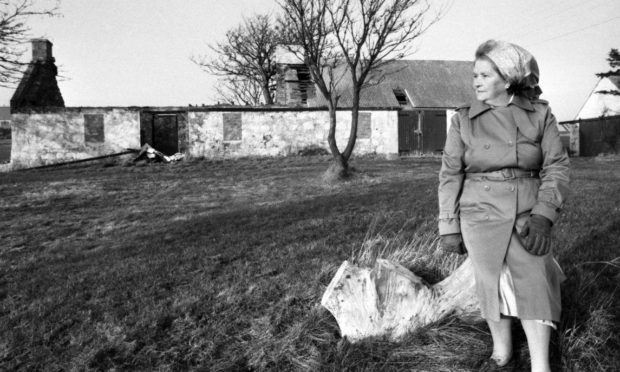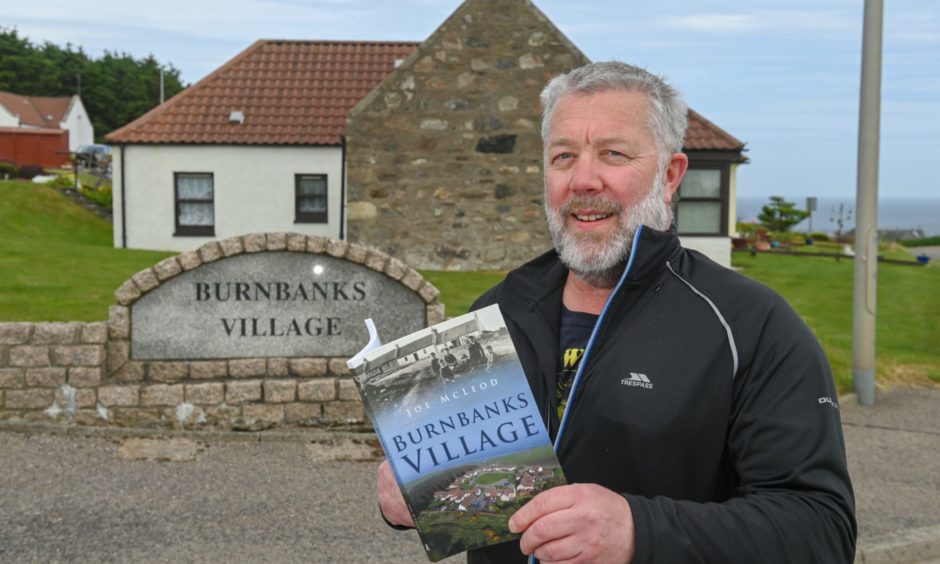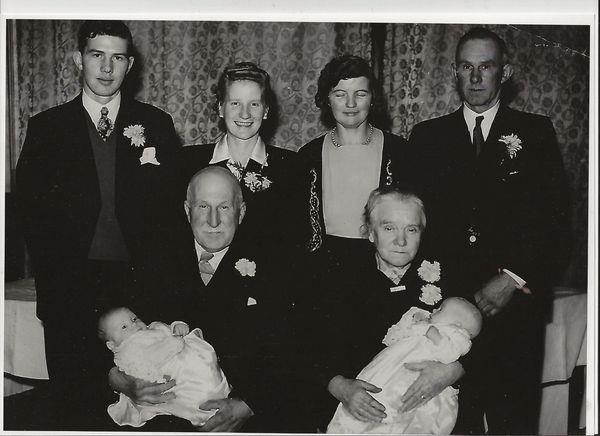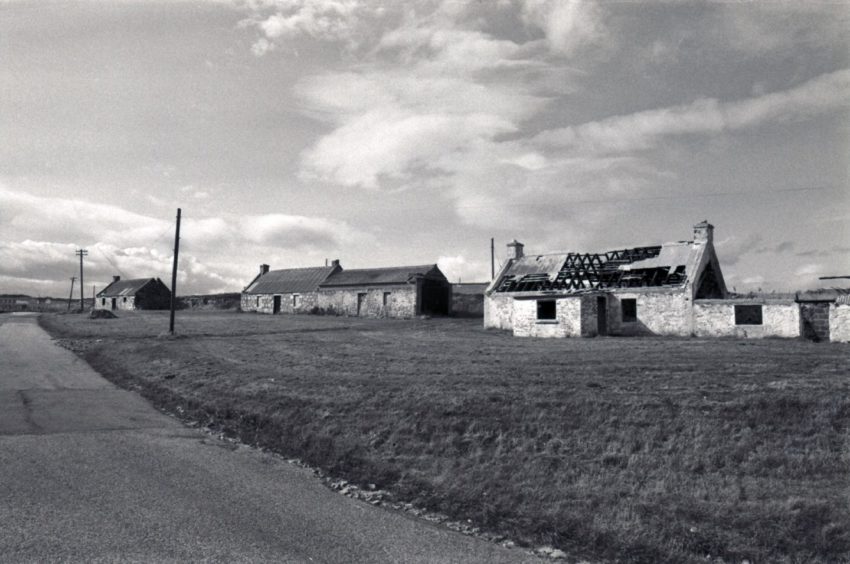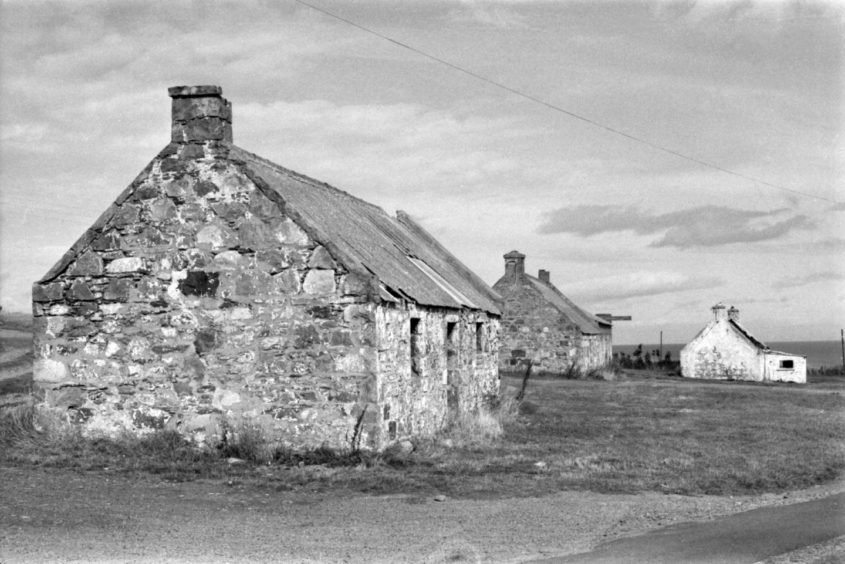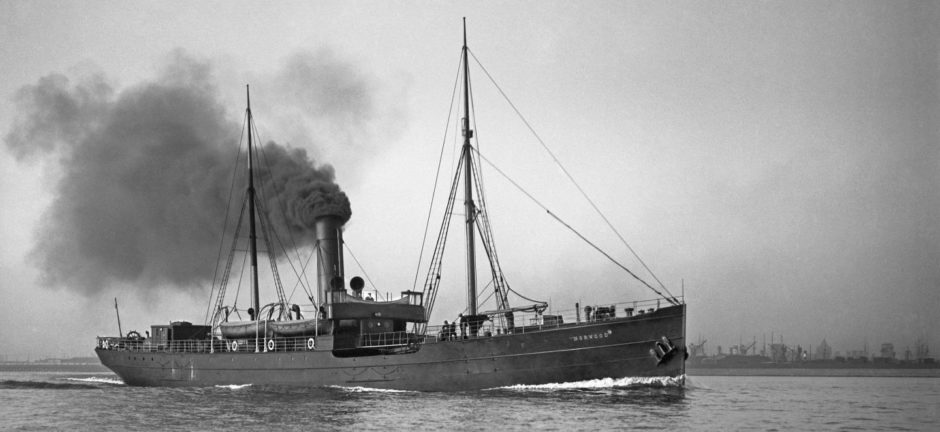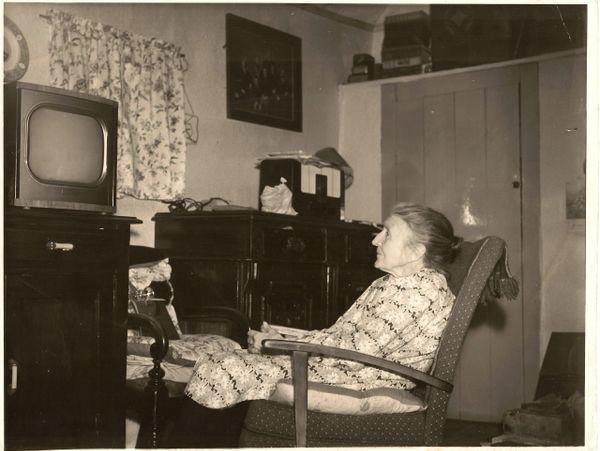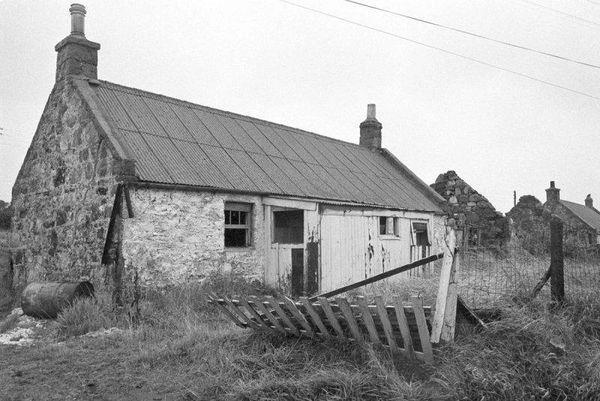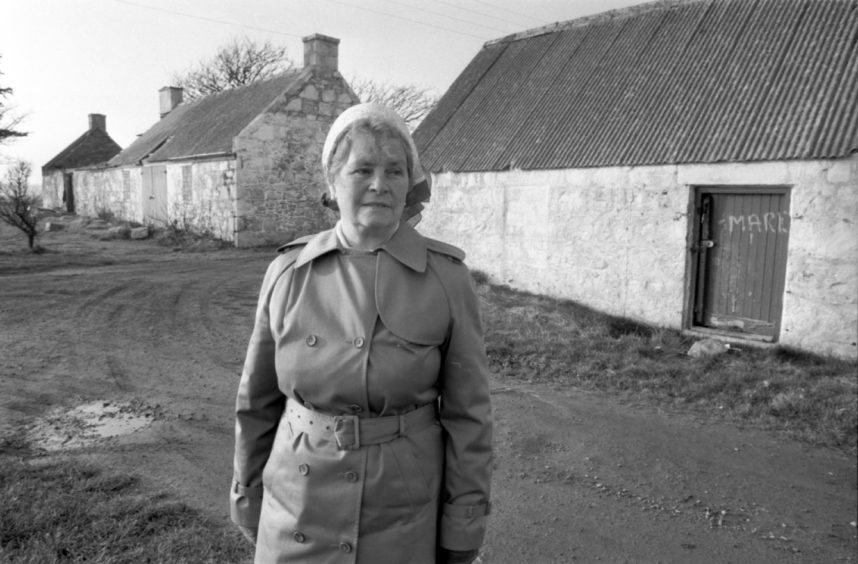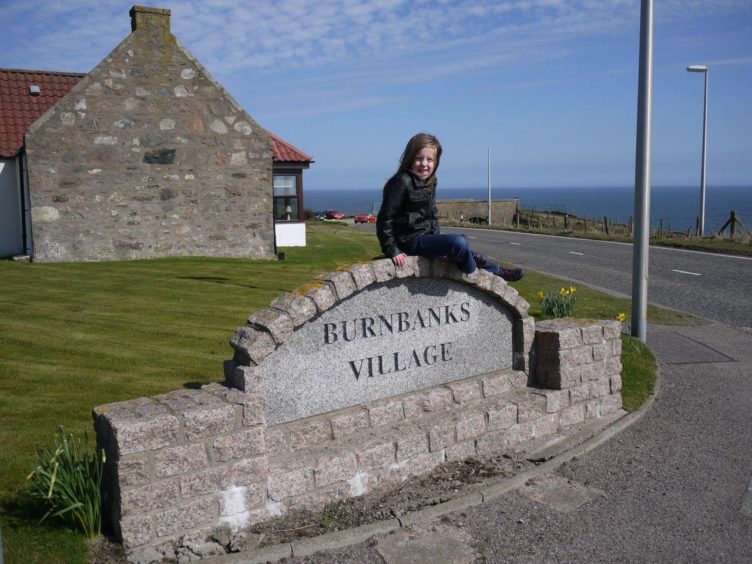It was a north-east community which gradually became a derelict collection of houses and was finally abandoned in 1980.
But, although the roofless shells and shattered ruins suggested Burnbanks Village near Aberdeen had been consigned to the dustbin of history, some local residents had other ideas and sparked a resurrection campaign.
Joe McLeod was among the people who moved into the little hamlet, situated near the North Sea, four miles south of Aberdeen, when it was being rebuilt in the early 1990s and has poured himself into the task of investigating the myriad stories which testify to its often traumatic past.
These include shipwrecks, a cholera outbreak, train accidents, organised (but illegal) boxing fights, war casualties and the shenanigans of a serial bigamist who arrived in Burnbanks in 1916 and left a trail of destruction in his wake.
It is nothing at all like Brigadoon, yet Mr McLeod has compiled a fascinating compendium of stories from his decades of research.
The memories just flooded in for Joe
He explained: “From the 1960s to the 1980s, it lay in various stages of dereliction and abandonment: elderly residents died, people moved out, families moved on and the houses were not re-let, so it became uninhabited.
“However, a plan by a local builder, Scotia Homes, brought it back to life, rebuilding the shattered ruins and I moved into Burnbanks Village in 1992 while it was being refurbished.
“There was a sense of excitement from a lot of the new villagers and we knew we had something unusual. As my research deepened, I was surprised at the amount of times Burnbanks had appeared in the news and plenty of ex-residents were bursting to tell me their stories of their upbringing.
“So many photographs and information was collected that I was determined it would not be consigned to a dusty drawer only for my family to throw it out once I died, so I decided to publish a book.
“I hope I have done them justice.”
Cholera struck the north-east coastline
It may have been a tiny community, but Burnbanks was thrust into the national spotlight when an outbreak of cholera had grievous consequences for several families in 1866.
Given the spartan conditions in which they were dwelling, and the lack of proper sanitary amenities, the disease, caused by consuming contaminated water or food, soon sparked tragedy and panic among those affected.
The Dundee Courier reported on October 6: “Several cases of what appears to be Asiatic cholera have occurred in the small fishing village of Burnbank [sic] during the past eight days.
“The deaths include an elderly woman; a fisherman in the prime of life, who was ill for only 10 or 12 hours and died; and one or two children.
“On Thursday, we learned that another death occurred and that several other persons were ill. A nurse has been obtained from the town, as no person could be got in the village to enter the affected homes.”
Eventually, the death toll reached seven and devastated two families in particular. A father and son, Andrew Craig, 34, and James Craig, three, succumbed within a day of one another.
And William Main subsequently lost his uncle George, 55, his wife Margaret, 31, and his daughter, Jean, five, in a little over three weeks.
Mr McLeod said: “When the outbreak occurred, the village closed down, neighbour avoided neighbour, and a doctor, nurse and constable had to be sent from Aberdeen to deal with the situation.
“Two of the deaths were registered by Constable John Bremner from the Bridge of Don area, because none of the surviving family members were well enough to travel to the city to complete the registration.
“These grim instances didn’t happen in some far-flung corner of the world; but right outside our door. The fear the villagers felt, the sadness at the deaths, and the rapidity the cases were dealt with [the bodies were treated with pitch and quicklime] must have been truly shocking.
“The last two casualties were children under the age of five and they died within an hour of each other. Look around your own communities and try to imagine the horror of two children dying in your street within an hour.”
For those in peril on the sea
Coastal communities are accustomed to dealing with tragedies at sea, but nobody in Burnbanks was prepared for the death of ship’s cook, James Shepherd Coutts, when his vessel SS Norwood was attacked in February 1917, close to the entrance of Aberdeen harbour, by the German U-boat UC-29.
On a passage from Middlesbrough, it had already entered the port when it was ordered not to tie up, but make its way to Peterhead 30 miles north.
Warnings had previously been issued about the threat of U-boat activity in the North Sea, so it was unclear why the SS Norwood was instructed to relocate when it was in a position of safety.
But the decision ultimately sealed the fate of all on board and 18 men died.
Mr McLeod admitted it was difficult to track down a clear link between Joseph Coutts and Burnbanks, but his tenacity eventually paid dividends.
He said: “I found that his first wife, Elizabeth Fingzies Coutts, had died in 1912 in Rosemount in Aberdeen, aged only 31 from acute pneumonia. His second wife was called Helen Campbell and their marriage certificate, dated 1914, confirmed that she came from Burnbanks and lived with her parents, Alexander and Jeanie Campbell in [houses] Nos 10 and 11.
His endeavours also unveiled an incident when a German plane attacked a train at Cove, which was travelling north during the Second World War and unleashed machine-gun fire and dropped a bomb, which missed the track but obliterated a section of a dry stane dyke next to the railway track.
At first, some of the Burnbanks children thought this was exciting and rushed towards the low-flying aircraft, but their terrified parents screamed at them: “Get down! Take cover! This is not a game.”
The community pulled together during these periods of global conflict. But there were other times where trouble occurred of a purely domestic nature.
Crimes and misdeeds in Burnbanks
In the days before TV and the advent of the music hall and cinema, people had to find their own entertainment and sporting fun wherever they could.
But that didn’t always go down well with the authorities, not least when hundreds of inhabitants of Burnbanks, Cove and Nigg met up to watch an impromptu outdoor boxing match – at 2am – in July 1844.
The contest was arranged at that unholy hour as part of a cat-and-mouse tussle between the locals and the law-makers. But it didn’t go down well with the latter and the Aberdeen Herald and General Advertiser published a scathing report, entitled “Brutal Affair”, which described those involved as the “dregs” of society.
It said: “We understand that the inhabitants of Nigg were alarmed at two o’clock in the morning by the incursion of a riotous mob, upwards of 500 of the dregs of the population of Aberdeen, for the purpose of witnessing a prize fight between two noted characters, well known to the authorities.
“One of them was a weaver and the other a coal carter. The whole of the mob entered and took possession of a pasture field on Mr Ferguson’s property at Altens, where having formed a ring, the two principal actors [boxers] stripped themselves and cut and bruised each other for more than half an hour until the brutal work was put to a stop by the intervention of the police.
“The whole affair has been put into the hands of the proper authorities and we trust the result will be sufficient to prevent this quarter [area] being disturbed by any such exhibitions of the exploded barbarism of times now passed away.”
It might be another time, another place, but not much has really changed. Nowadays, we call it pay-per-view!
The man with four names and no heart
In the midst of the First World War, soldier Alexander McPherson arrived in Burnbanks and created a pile of devastation of his own.
He claimed he had been in the 4th Battalion Canadian Highlanders in France and owned large areas of land in his home country, but had fallen into bad company in London, so deserted from his regiment and joined the Gordon Highlanders in Aberdeen, where he came into contact with Burnbanks.
This chancer par extraordinaire met local woman, Roselina Will, and she was smitten by his advances. McPherson convinced her to marry him, but even by the day of the wedding, he was in trouble for falsifying the signatures of the two witnesses on the marriage licence.
Unperturbed, he ‘borrowed’ a tweed suit from Burnbanks resident Donald Bruce and the couple were married in Nigg Manse on May 14 1916. But the following day, he rose early and that was the last time anybody saw the money they had loaned to him and the last time Roselina saw her groom.
It wasn’t the first crime committed by this character. Nor was it the last.
Prison didn’t deter this serial bigamist
Mr McLeod said: “The police were informed and he was convicted of theft, falsifying the marriage licence and desertion from the British Army and jailed in Craiginches Prison for 10 months.
“Less than a year later, he moved to Mossblown in Ayrshire and married again. His name was now Robert Steele and the wedding to Jeanie Duff Scott, aged 21, went ahead on Christmas Day in 1917.
“Then he did the same thing again: disappeared the day after the ceremony.
“[Eventually] Roselina Will put notices in several newspapers to try and find her husband to bring a divorce action in 1922 – and that was where it began to unravel for the bigamist.
“This is where his aliases were discovered: they included Alexander McPherson, Robert Steele, Robert Crawford, George Irvine…and he was later found guilty of bigamy and sentenced to six months in prison.
“But after this, he disappeared. If he’s known to have used four names, it’s likely he did it again. But I couldn’t find any further trace of him after 1925.”
There was, at least, a happy ending for poor Roselina. She remarried in 1922 and lived for more than 50 years until her passing, aged 81, in 1973.
Home is where the heart is for Joe
Joe McLeod has spent nearly 30 years in Burnbanks and wouldn’t swap it for the world. Despite the many tragic incidents in his book – which explain why he has urged people to be very wary of walking on the surrounding cliffs – he has been caught up in the village community life.
As he said: “Sure, it’s windy in the winter and quite often fog-bound in the summer, but we have a clear view of the sea which outweighs any negative points and, for me, that alone is worth the price of the house.
“Not all villagers have enjoyed living here, but those who do enjoy it are full of pride and praise for Burnbanks. If you want to get involved in the community, it is open to all, but if you want a quiet existence and minimal contact with others, then that’s fine as well.”
He hasn’t glossed over the many dark chapters from the past – or perpetuated the myths which have developed such as the claim Cary Grant’s mother came from Burnbanks (she didn’t) – but there’s plenty of joy in these pages as well.
The history of this place would make a gripping documentary.
The book is available from https://burnbanksvillage.co.uk/
